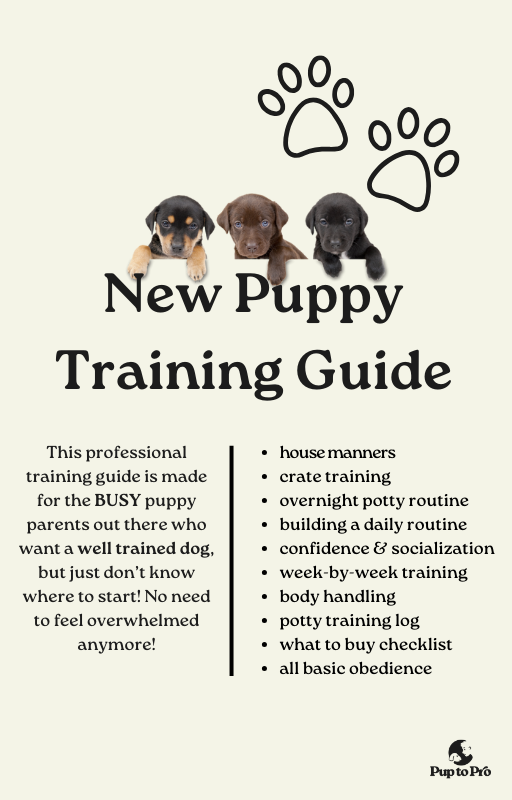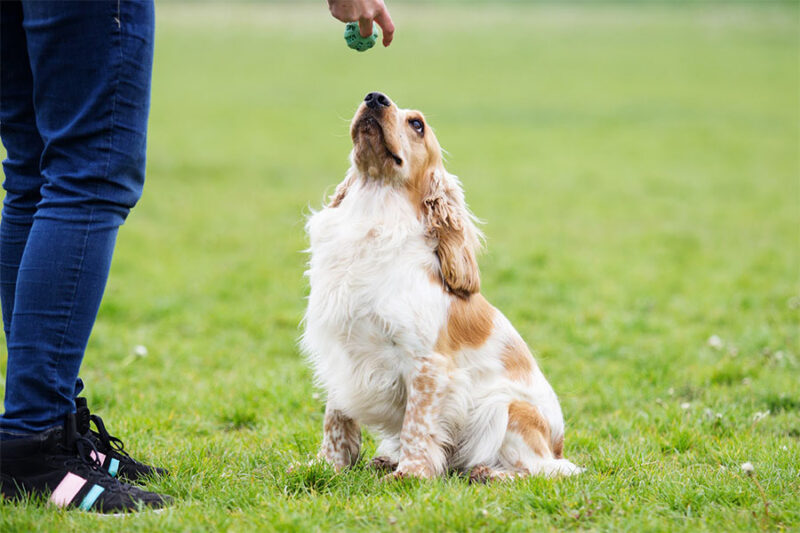Puppy Training Techniques: Teaching Basic Commands for a Happy Pet
Wiki Article
Top Young Puppy Training Techniques to Ensure a Mannerly Family Pet
Effective young puppy training is vital for growing a mannerly friend, and different methods can considerably influence a dog's growth. Amongst these, positive reinforcement attracts attention as a fundamental technique, promoting trust and motivating desirable behaviors. Uniformity in commands and early socialization are just as crucial, preparing for a well-adjusted pet. In addition, the functions of crate training and chain rules can not be overlooked. As we discover these methods further, it ends up being clear that the success of puppy training pivots on a combination of strategies that can change your animal's actions in exceptional ways.Favorable Reinforcement Methods
Making use of positive support techniques is necessary for effective young puppy training, as it urges desired habits via benefits as opposed to punishment. This method takes advantage of the natural discovering procedures of canines, strengthening etiquette by providing instant and concrete rewards, such as treats, praise, or playtime. By linking favorable outcomes with particular actions, young puppies are most likely to repeat those habits in the future.Efficient favorable reinforcement includes timing and uniformity. Benefits ought to be provided promptly after the preferred habits strikes produce a clear connection in the puppy's mind. Additionally, varying the sorts of incentives can keep a young puppy's rate of interest and motivation throughout the training process. For instance, some pups might respond better to verbal appreciation while others might favor a favored toy or treat.

Uniformity in Educating Commands
Keeping uniformity in training commands is essential for reinforcing the lessons discovered with favorable support techniques. Canines prosper on regular and predictability, so making use of the same verbal commands and hand signals for particular habits is crucial. This uniformity helps young puppies comprehend what is anticipated of them, lowering complication and aggravation for both the instructor and the pet dog.
Timing also plays a significant duty in uniformity. Commands ought to be provided immediately throughout training sessions and complied with immediately by positive support, such as deals with or praise. This instant feedback helps strengthen the organization in between the command and the desired actions.
Integrating consistency into training sessions will produce a stable understanding environment, advertising quicker mastery of commands. Inevitably, a well-structured method cultivates a strong bond in between the puppy and its owner, bring about a much more mannerly and obedient animal.
Socializing With Other Pets
Socialization with various other pets is vital for a puppy's advancement, as it aids them learn proper habits and interaction skills in varied social contexts. Early communications with different pets can considerably influence a puppy's character and flexibility in various circumstances. When pups are revealed to a variety of animals, they come to be more confident and less scared, which can protect against potential behavioral problems later in life.
Teach your young puppy to recognize signals from other family pets, such as indications of playfulness or pain, promoting common respect and understanding. Normal socialization not just enhances your young puppy's social abilities however additionally contributes to their general well-being, producing an extra harmonious living setting.
Crate Training Perks
Recognizing the various benefits of crate training can considerably enhance both the young puppy's and proprietor's experience. Crate training provides a protected and risk-free setting for puppies, guaranteeing they really feel safeguarded when laid off. This complacency can dramatically reduce stress and anxiety and stress and anxiety levels for both the proprietor and the pet.Furthermore, dog crates work as a valuable house-breaking device. Pups naturally avoid soiling their sleeping area, consequently urging them to hold their bladder till they are allow outside. This instinct can expedite the housebreaking process, promoting great routines beforehand.
When unsupervised,Crate training also aids in managing a puppy's actions - puppy training. By giving address a marked room, proprietors can stop harmful habits, such as eating on furniture or entering harmful substances. Cages can be advantageous throughout traveling, using a familiar space that can aid relax a young puppy in new environments.
Lastly, establishing a pet crate regular motivates independence, allowing puppies to learn just how to be alone without concern. Generally, cage training is an effective method for advertising technique, safety and security, and harmony, bring about a well-adjusted, well-behaved pet dog.
Leash Training Basics
Leash training is a fundamental facet of responsible family pet possession that guarantees a secure and pleasurable strolling experience for both the puppy and its proprietor. Correct leash training begins early, preferably during the puppy's socializing duration. This training helps establish excellent habits and promotes favorable actions when out in public.To start, pick a comfortable collar or harness that fits your puppy well. Connect a tough chain, ensuring it is not as well long, as this can cause drawing and irregular behavior. Begin in a quiet atmosphere to lessen distractions and gradually introduce your young puppy to brand-new environments.
Usage favorable support techniques, such as treats and praise, to encourage your young puppy to walk next to you. If your young puppy draws, quit strolling and await them to go back to your side prior to proceeding. This teaches them that drawing will certainly not generate onward activity. Uniformity is vital; technique routinely and stay client, as mastery takes time.
Additionally, include you can find out more short training sessions click for info with fun distractions to construct your pup's emphasis. With dedication and persistence, chain training will certainly lead to a hospitable companion, making strolls satisfying for both the young puppy and the owner.
Final Thought
In final thought, using effective young puppy training strategies is important for creating a well-behaved family pet. On the whole, these methods jointly advertise a harmonious connection in between pups and their owners.As we explore these techniques better, it becomes clear that the success of pup training pivots on a mix of strategies that can transform your animal's habits in impressive ways.
Utilizing positive reinforcement strategies is essential for effective young puppy training, as it motivates preferred actions via rewards rather than punishment.Crate training also aids in handling a young puppy's habits when not being watched.Leash training is a basic aspect of responsible pet ownership that ensures a risk-free and pleasurable walking experience for both the young puppy and its owner.In conclusion, employing effective puppy training techniques is essential for developing a well-behaved pet.
Report this wiki page